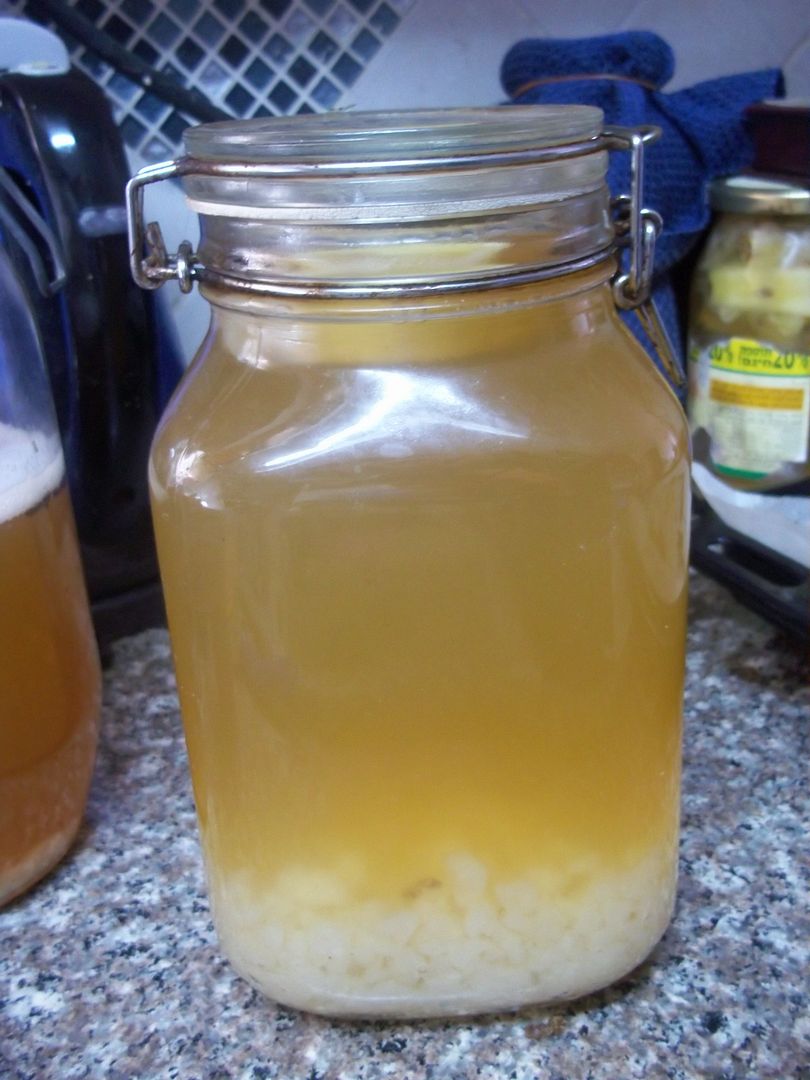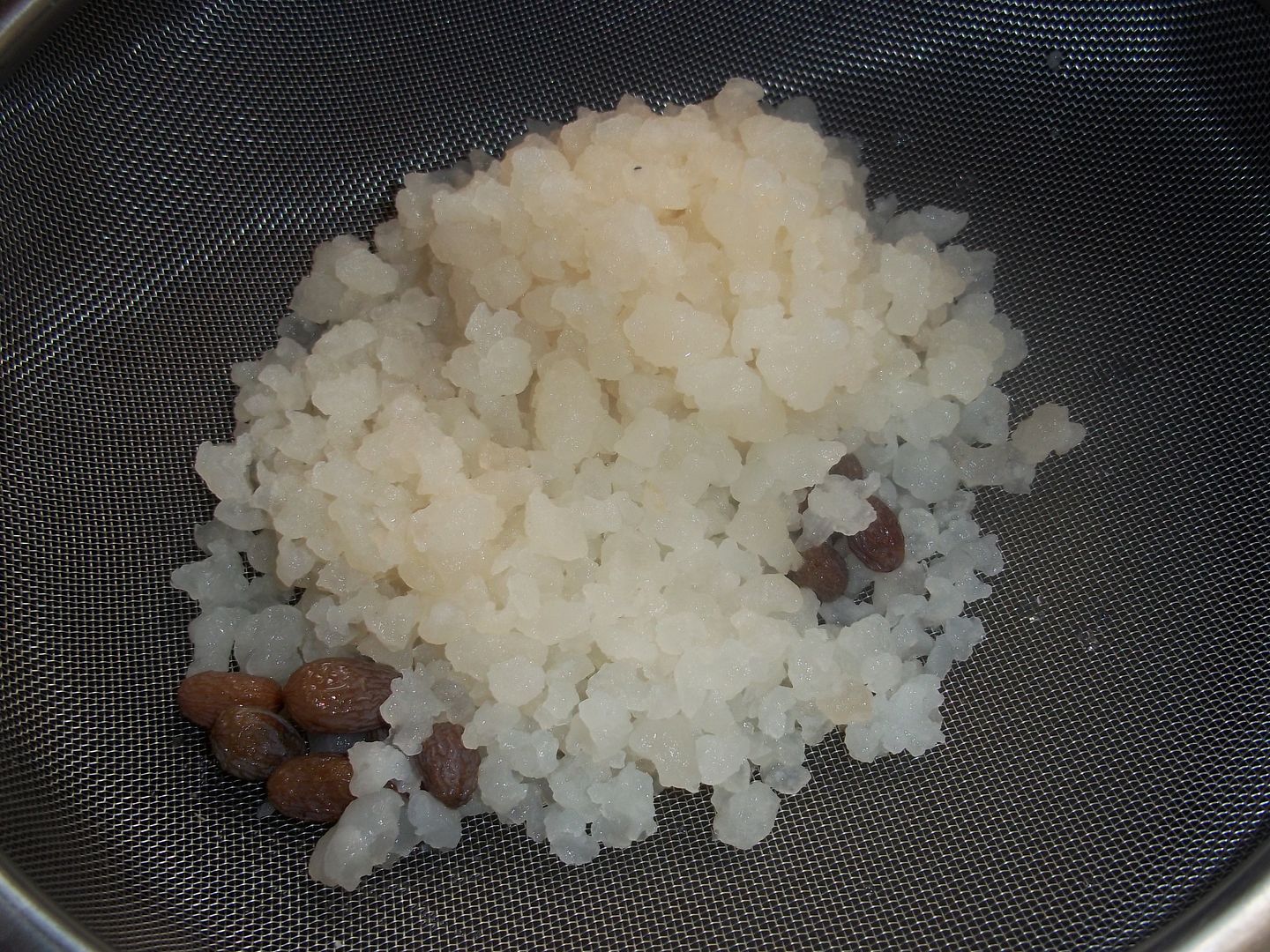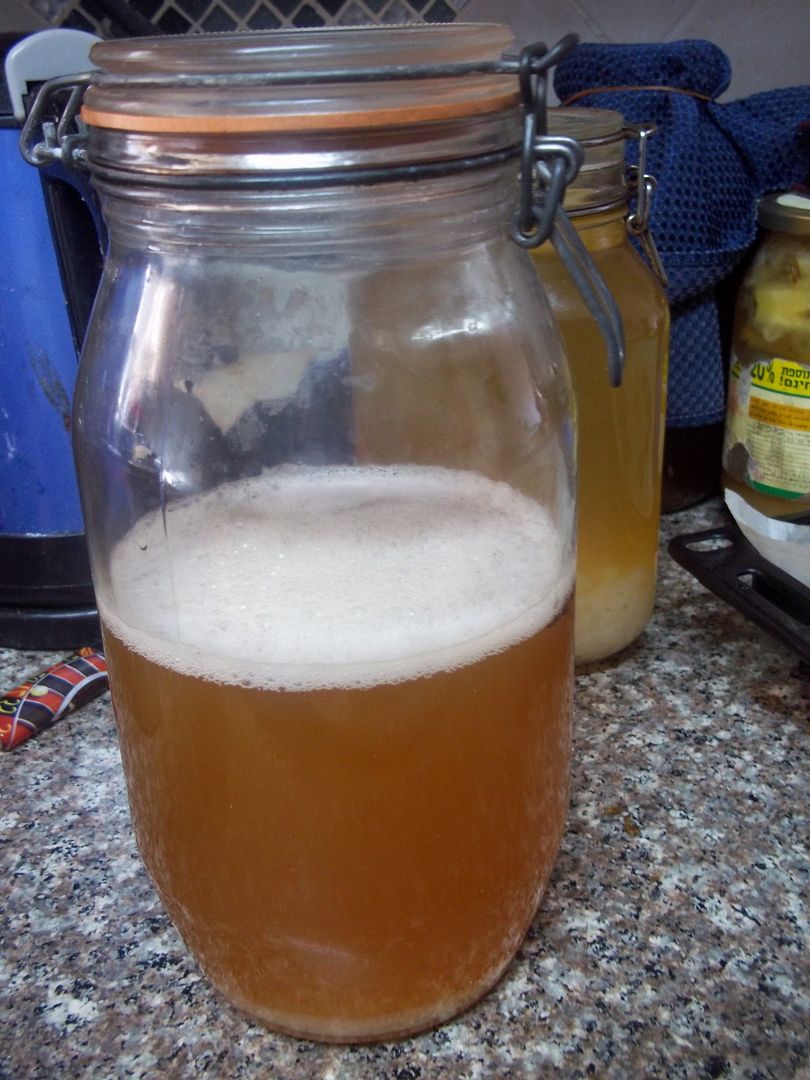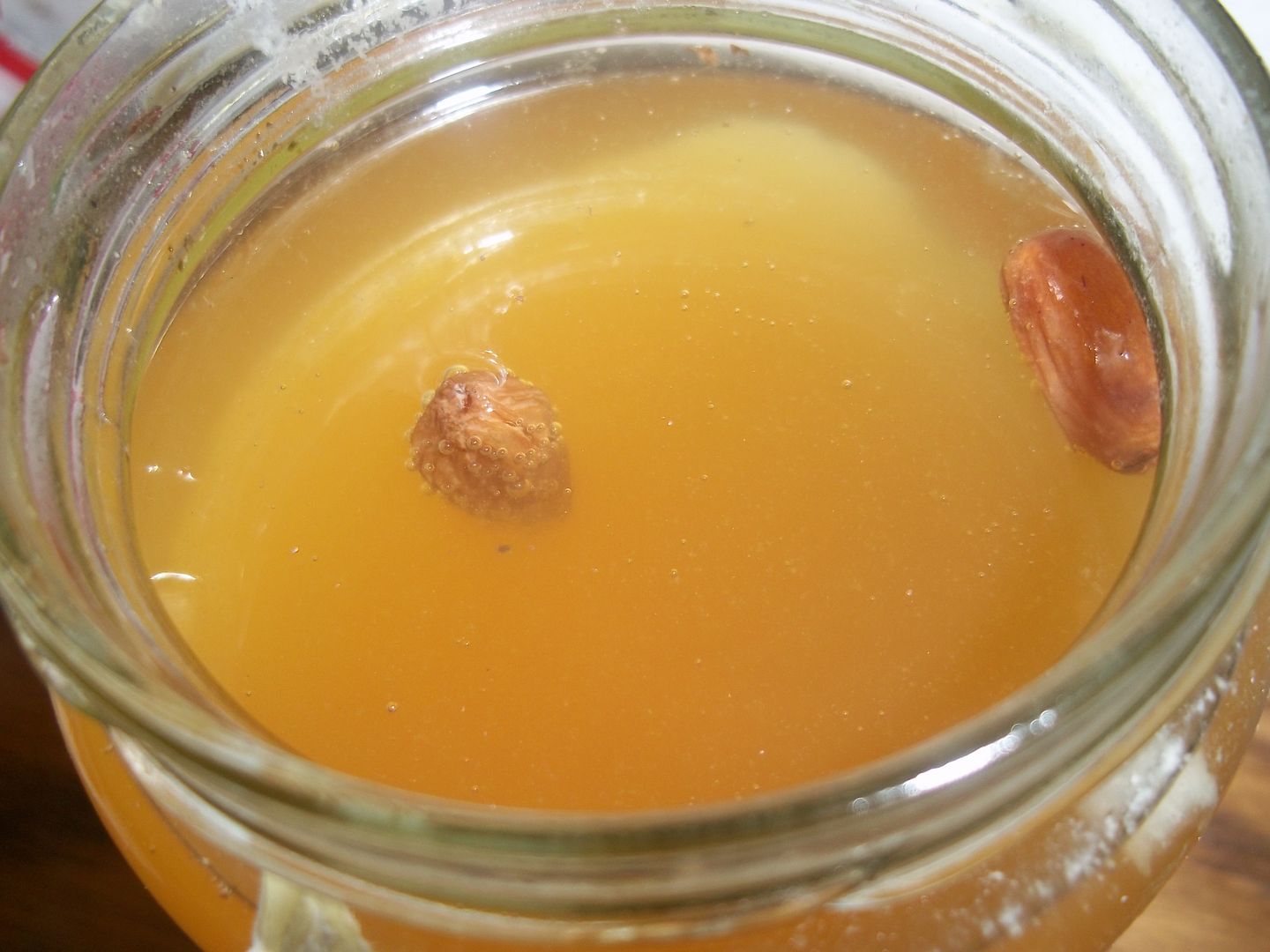 I’m very into my probiotics. I don’t eat yogurt because I can’t eat dairy, and I don’t buy store bought probiotics, but I do have probiotics, usually every day, and sometimes many times a day- and much more probiotics than is available in the store bought stuff.
I’m very into my probiotics. I don’t eat yogurt because I can’t eat dairy, and I don’t buy store bought probiotics, but I do have probiotics, usually every day, and sometimes many times a day- and much more probiotics than is available in the store bought stuff.
How’s that?
I eat fermented foods that I make at home, like kombucha, sauerkraut, lacto-fermented pickles, ginger beer, and now I’ve started making water kefir, also known as tibicos.
It’s all my mom’s fault.
Well, partially mine, I guess.
When I got into kombucha, I gave some SCOBY’s (symbiotic cultures of bacteria and yeast) to my mom as a back up. Then she started reading up on kombucha, and then read about milk kefir, and about water kefir, until she was absolutely hooked on probiotic cultures. She’s had more success at it than I have also- I forget about my stuff and kill it via neglect far too many times… and when that happens, my mom rescues me by giving me some of her SCOBY’s.
She has been fermenting kombucha, milk kefir, and homemade apple cider vinegar for a while, and when someone she knew was in Mexico and was drinking tibicos/water kefir daily, and told my mom about it, my mom really, really wanted to get her hands on some as well. But this person forgot the tibicos in Mexico, and my mom wasn’t sure how she’d find it again.
Finally, finally, finally, my mom found a way to get some tibicos, giving me a play by play of the progress of the tibicos from mexico to the US and then on to her… and when she finally got it, passed it on to me. Frankly, I thought my mom was taking this “obsession” of hers a bit far- what’s the big deal already- its water kefir- so what? But now that I have my own water kefir and have been using it daily, I’m in love.
In fact, I love it better than kombucha, and that is saying a lot!
So- what exactly is water kefir, and why is it so special?
Water kefir, like milk kefir and kombucha, is made from a symbiotic culture of bacteria and yeast- in this case, small gelatinous clear or off white chunks called kefir grains (but they’ve got no relation to grains), that you put in a liquid- in this case, sugar water. The water kefir grains eat the sugar in the water, and have probiotics, lactic acid, and carbon dioxide as a byproduct.
 |
| Water kefir “grains” |
Water kefir tastes like fizzy mild lemonade.
Water kefir has even more varieties of probiotics and beneficial bacteria and yeasts than kombucha!
What exactly are probiotics?
They’re good bacteria that are supposed to colonize our intestinal tract, which help aid digestion, food absorbtion, and keep the gut in optimal health. In the past, people ate a lot of fermented, live foods, rich in probiotics, but our modern lifestyle is rife with things that destroy beneficial intestinal flora, such as antibiotics, birth control pills, pesticides, GMOs, etc… and very few people eat fermented, probiotic rich foods, so that the guts of most people are very, very unhealthy.
Because the guts are unhealthy, and beneficial bacterias and yeasts are few, bad bacteria and yeasts such as h. pylori and candida, among many others, flourish virtually unhindered and take hold of the digestive track, causing all sorts of digestive upsets as well as causing leaky gut syndrome- when the walls of the intestinal track become permeable and large bits of food that shouldn’t be getting into the blood stream do get into the blood stream, which can cause all sorts of health issues, from eczema and other skin ailments, arthritis, asthma, stomach issues, etc…
To make sure your gut is in optimal health, you need to firstly, try to limit your exposure to things that destroy gut flora- which is why antibiotics should only be taken with great reservation- only when truly necessary, and not just whenever you have the slightest sniffle, and if you’re using the birth control pill, you should reconsider if that is the type of contraceptive you really want to use (it has many other health ramifications in addition to causing gut issues).
In addition to minimizing exposure to gut flora destroyers, its also very important to colonize the gut with beneficial bacteria and yeasts, bacteria that help your body break down and digest your food, for example, and by their presence when they proliferate, they choke out the bad bacteria and yeasts. Beneficial yeasts, such as in kombucha, water kefir, and milk kefir, displace candida and other bad yeasts that colonize the digestive tract.
Because we’re unknowingly exposed to so many gut flora destroyers, even when we try to avoid them, its important to keep on repopulating the gut with probiotics, and have probiotics on a regular, ideally daily, basis.
But buying probiotics, especially good quality ones, can get pricey quite quickly. Which is why I make my own, and you should too.
Water kefir, in addition to being a terrific probiotic, is also very tasty, and when prepared a certain way, can be exactly like soda- very bubbly, sweet, and yummy.
But that’ll have to be saved for a second post- one on secondary fermentation.
For now, here’s instructions on how to make your own homemade water kefir.
You’ll need water kefir grains to start with. Kefir grains typically multiply if they’re “happy”, if the conditions for them are good, and therefore, people who make water kefir will generally end up with extra grains that they can either give away or sell. If you know someone with water kefir grains, you can ask them if they have any to share. There are also websites that sell water kefir grains and websites set up for giveaways- “free for shipping”.
If anyone is local to me, I am selling grains- email me at [email protected] to find out details and pricing.
So once you have your kefir grains, you’ll need to put it in a glass jar with water and sugar, cover it, and let it sit for 24 hours.
There are many theories about what type of sugar and what type of water is necessary to make the water kefir grains happiest, so they’ll flourish and multiply, and I don’t listen to them.
My mom read that you should use unrefined cane sugar, a drop of baking soda, a drop of salt, a slice of lemon, some unsulphured raisins, and cleaned egg shell in addition to dechlorinated unfiltered water- water that has its minerals in it, but doesn’t have the chlorine because you let it evaporate out by leaving it out overnight, or that you boiled… This is supposed to provide the necessary minerals and nutrients for the kefir grains.
I don’t bother doing ANY of that.
I use some plain chlorine full tap water, jaggery- a block of unrefined cane sugar used in Indian cooking, and occasionally add a slice of lemon or a few (yes sulfured) raisins. And sometimes I use white (beet) sugar. Sometimes a mix of jaggery and white sugar.
And my grains are flourishing, so I must be doing something right.
I found out afterward that jaggery is also traditionally used in Central America, where tibicos/water kefir is from, and that’s the type of sugar they love best.
Who knows.
It seems to be growing fine in my white sugar as well.
Don’t use honey- its an antibacterial and will kill the probiotics in the water kefir grains.
So, now that you know the ingredients, what are the quantities?
I like to fill the bottom sixth of a jar with kefir grains, use roughly the same amount of sugar, but don’t typically measure… I fill the jar the rest of the way with water, add 5 or 6 raisins, maybe a slice of lemon, and cover it with its cover, screwed on tightly.
Leave the jar on the counter for 24-48 hours, ideally far away from any kombucha you may be growing. (Kombucha is possessive like that- the bacteria get in the air and will actually “overtake” ferments growing nearby and it might actually change your water kefir grains to kombucha somehow…) The drink gets somewhat carbonated, but if you’ll leave it for 48 hours, it might build up too much pressure inside the jar, so either unscrew the cover after 24 hours, or don’t close it tightly to begin with.
After it’s finished, strain out the grains, add more water and sugar (and anything else you eat) and repeat.
Either drink the water kefir as is, make a secondary ferment to add more flavors (more on that in future posts), add it to the soaking water when trying to reduce the phytic acid conent of your grain, bean, or seeds, add it to your bread doughs as a sourdough starter… and I’m sure there are many other things you can do with it.
 |
| Spiced apple water kefir, made with a secondary ferment, instructions soon |
If you can’t take care of the water kefir for a few days, keeping it in the fridge will slow down the growth of the probiotics, so you can neglect it for a little longer than you would otherwise. But too long neglected, and it will die.
Water kefir is amazing stuff.
I highly recommend trying it!
P.S. For those who don’t have fermented stuff ever, starting to take probiotic foods might cause a little digestive upset as the bad bacteria die off, so they recommend starting slowly, drinking only a quarter of a cup a day to start off with, and then build up… But if you’re used to having probiotics, there’s pretty much no limit to how much you can have. I sometimes drink even 5 or 6 cups (or more!) of fermented drinks every day.
Have you ever heard of water kefir before? Ever drank any? Does this look like something you’d make at home?
Do you make other ferments like kombucha or milk kefir?
Do you take probiotics, either homemade or store bought, on a regular basis?
What do you do to try to make sure your gut stays healthy?
Linking up to Wellness Weekend, Fight Back Friday, Fresh Bites Friday,






0 Responses
Hi, I'm making kefir for my adhd kid since a year now, I used to make kefir by Cocunut water ,,,now I started making kefir with jaggery organic my grains multiplied many times I removed grains n blend it to my kid smoothies n fed,,,, I'm having a question I prepare kefir with mineral water n organic jaggery is this balanced to make kefir a probiotic drink Bcz after reading above I thought I were really missing or not adding perfect minerals what exactly kefir grains need pls need a suggestion for water n sugar balanced recepi
Thank you